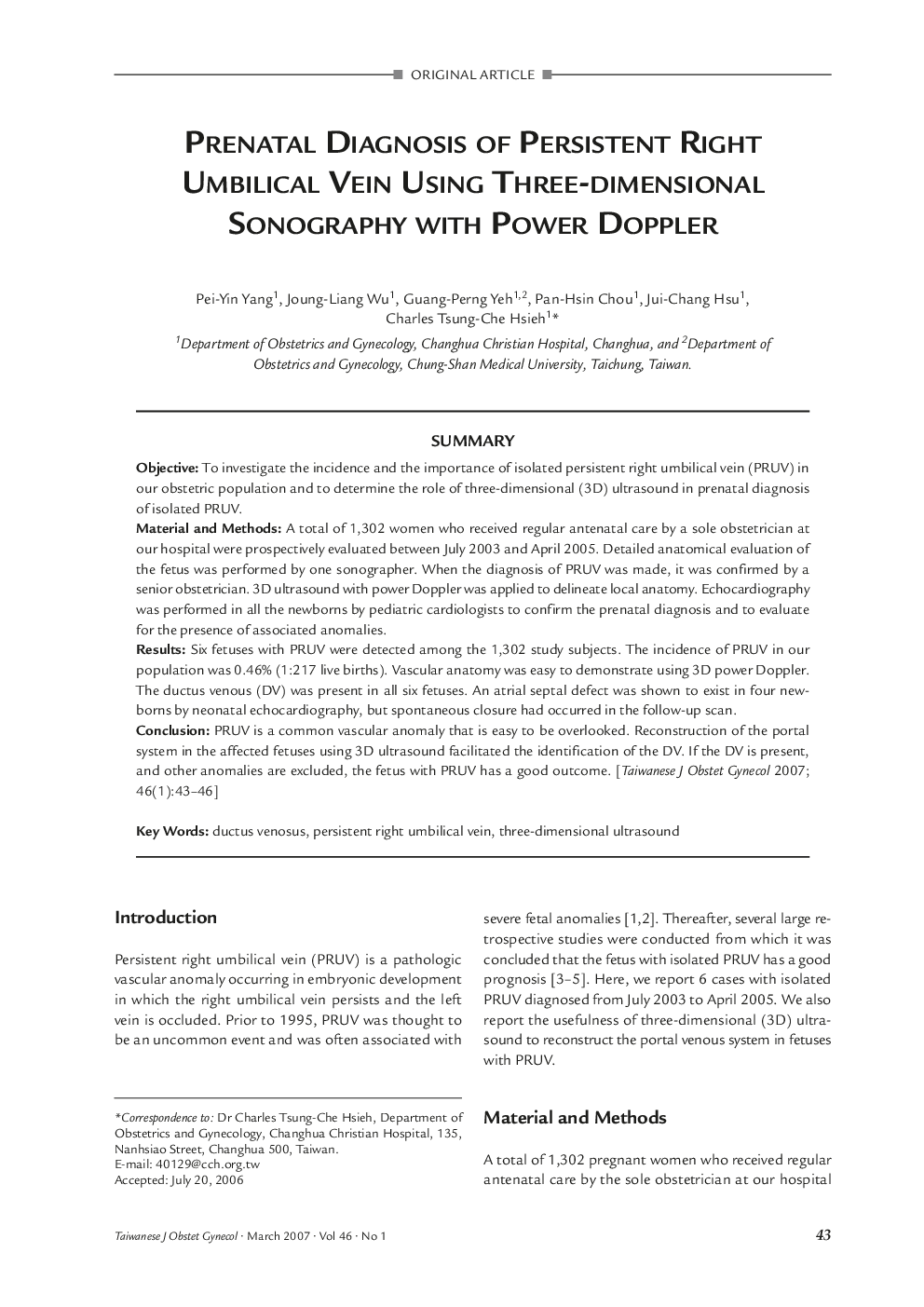| Article ID | Journal | Published Year | Pages | File Type |
|---|---|---|---|---|
| 3976129 | Taiwanese Journal of Obstetrics and Gynecology | 2007 | 4 Pages |
SummaryObjectiveTo investigate the incidence and the importance of isolated persistent right umbilical vein (PRUV) in our obstetric population and to determine the role of three-dimensional (3D) ultrasound in prenatal diagnosis of isolated PRUV.Materials and MethodsA total of 1,302 women who received regular antenatal care by a sole obstetrician at our hospital were prospectively evaluated between July 2003 and April 2005. Detailed anatomical evaluation of the fetus was performed by one sonographer. When the diagnosis of PRUV was made, it was confirmed by a senior obstetrician. 3D ultrasound with power Doppler was applied to delineate local anatomy. Echocardiography was performed in all the newborns by pediatric cardiologists to confirm the prenatal diagnosis and to evaluate for the presence of associated anomalies.ResultsSix fetuses with PRUV were detected among the 1,302 study subjects. The incidence of PRUV in our population was 0.46% (1:217 live births). Vascular anatomy was easy to demonstrate using 3D power Doppler. The ductus venous (DV) was present in all six fetuses. An atrial septal defect was shown to exist in four newborns by neonatal echocardiography, but spontaneous closure had occurred in the follow-up scan.ConclusionPRUV is a common vascular anomaly that is easy to be overlooked. Reconstruction of the portal system in the affected fetuses using 3D ultrasound facilitated the identification of the DV. If the DV is present, and other anomalies are excluded, the fetus with PRUV has a good outcome.
